
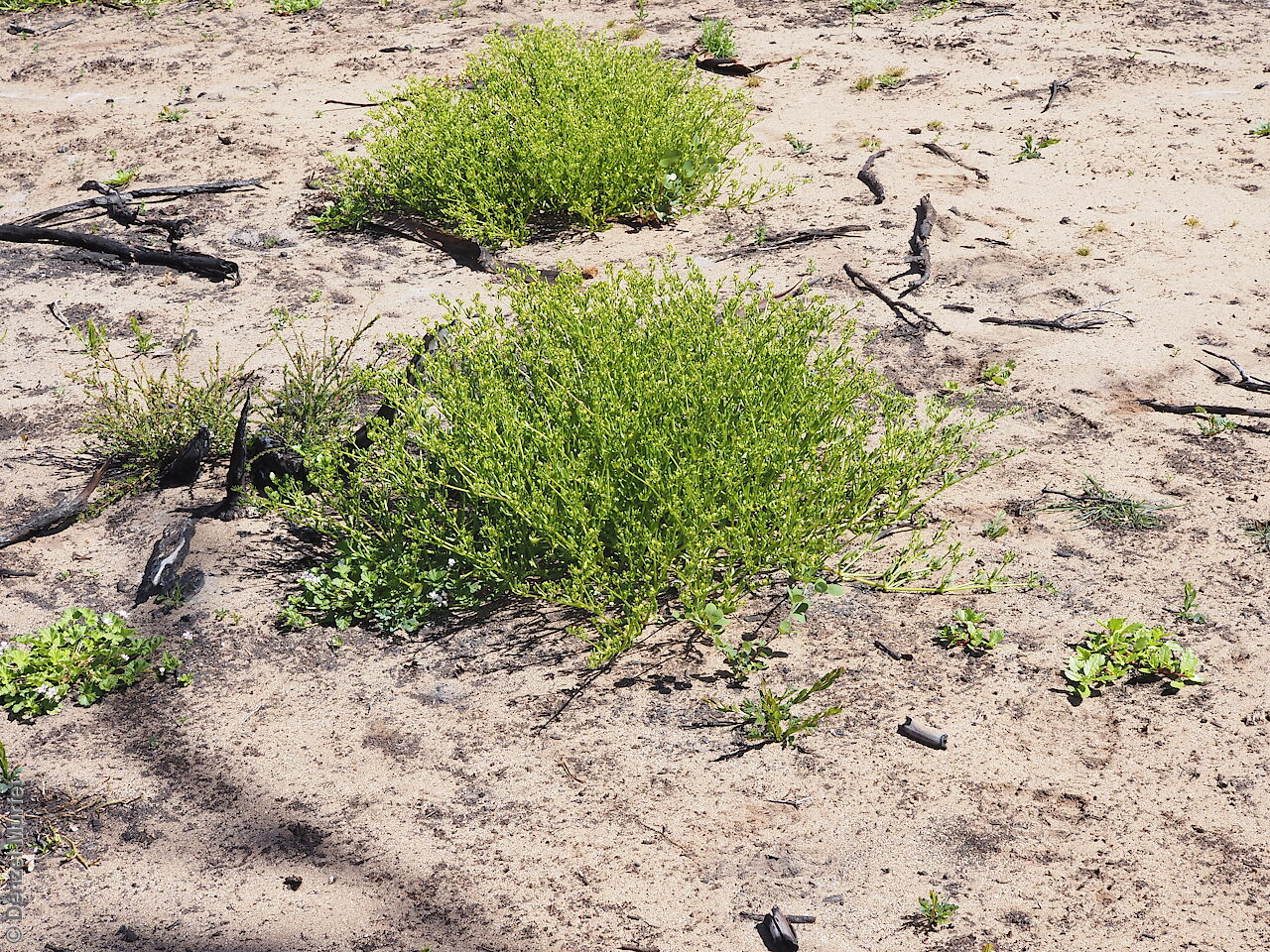
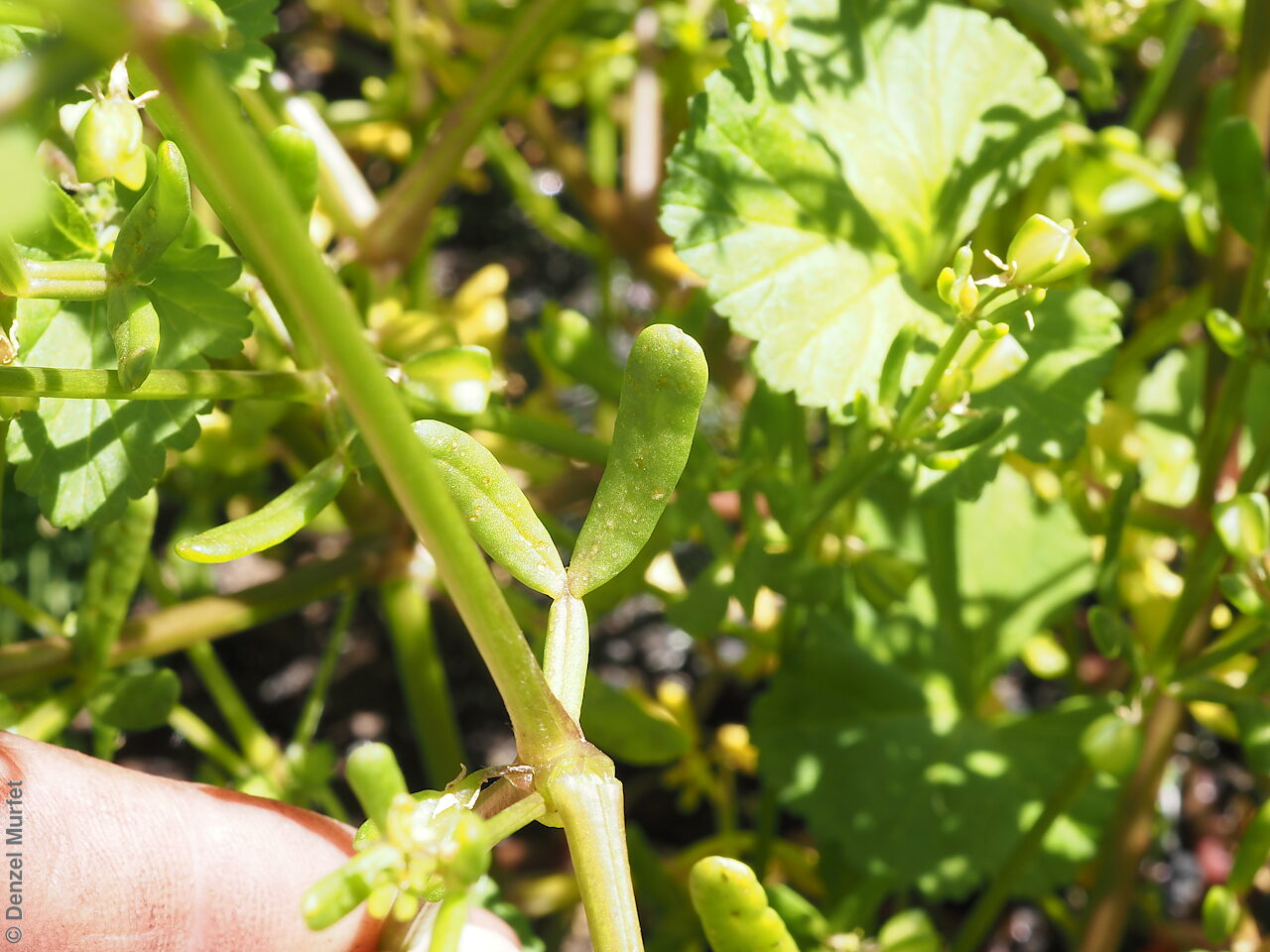
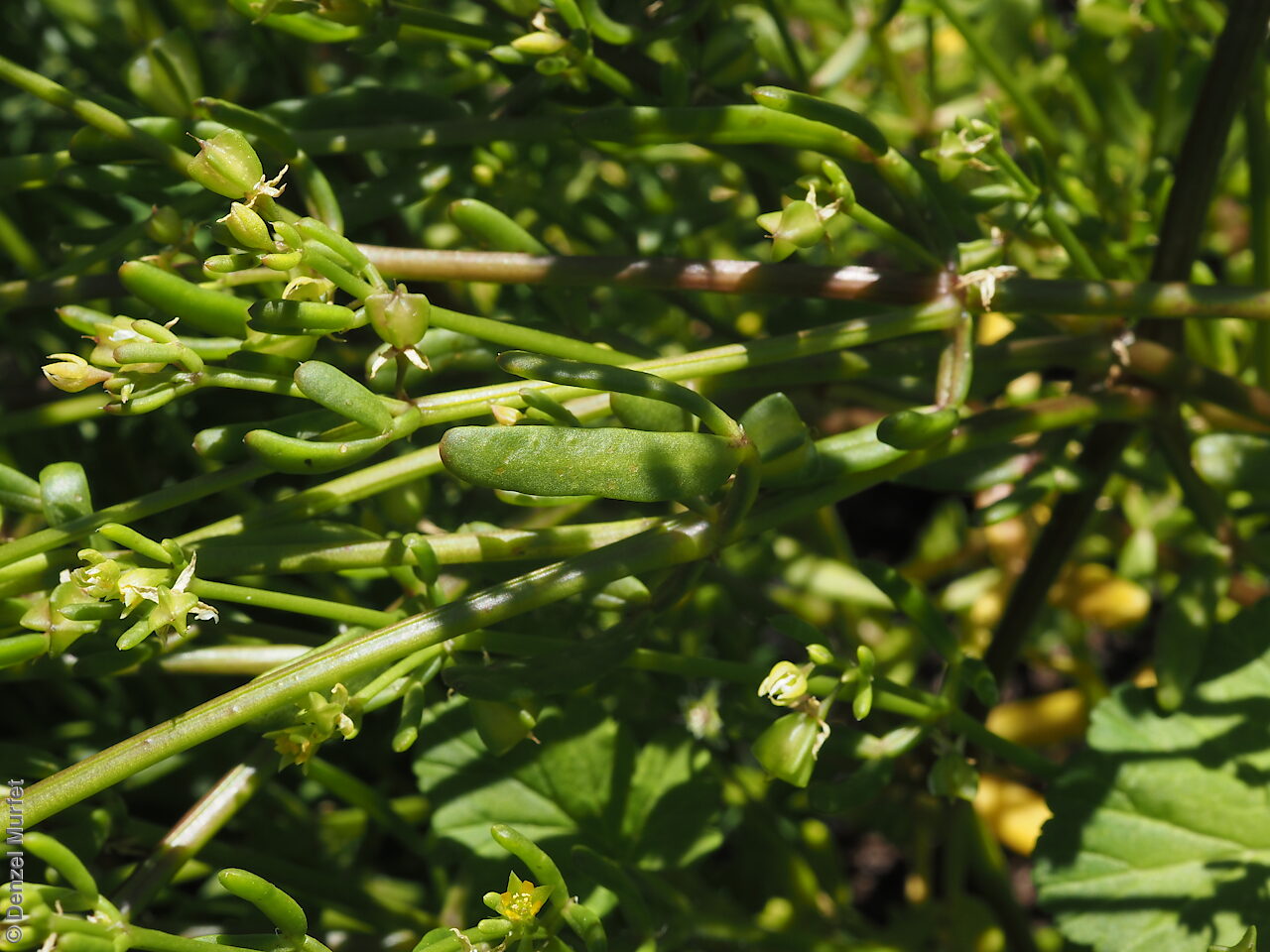
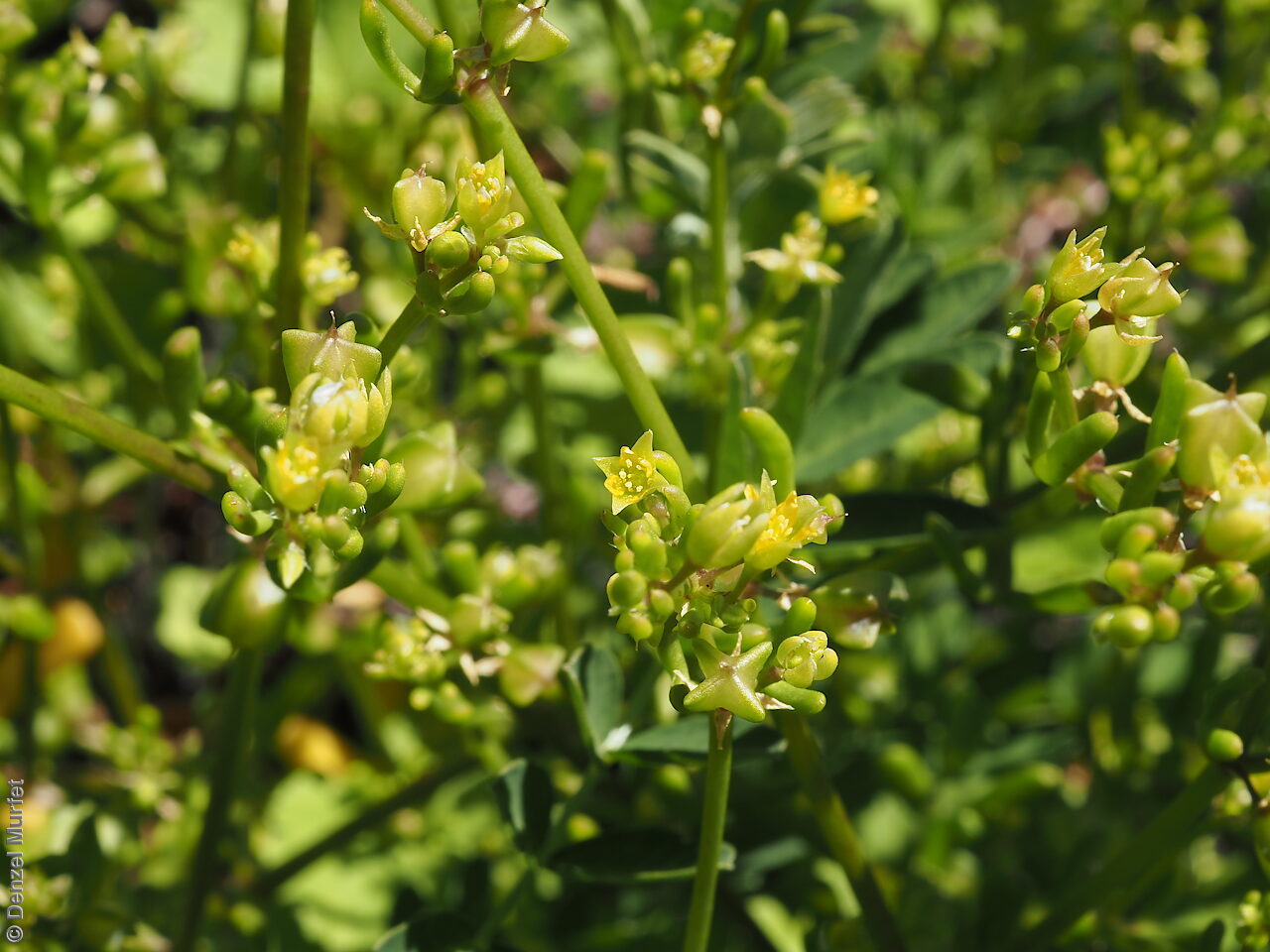
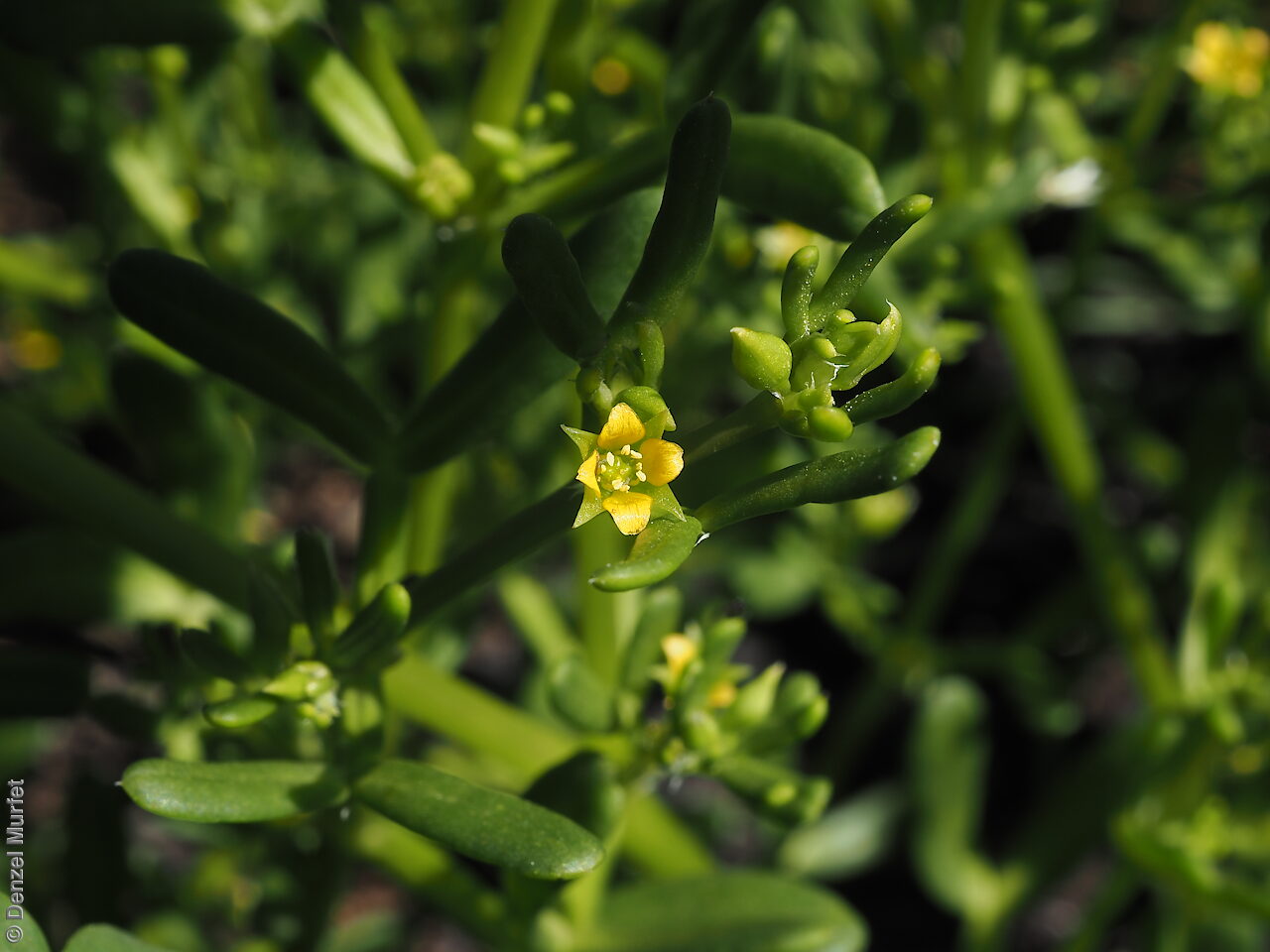
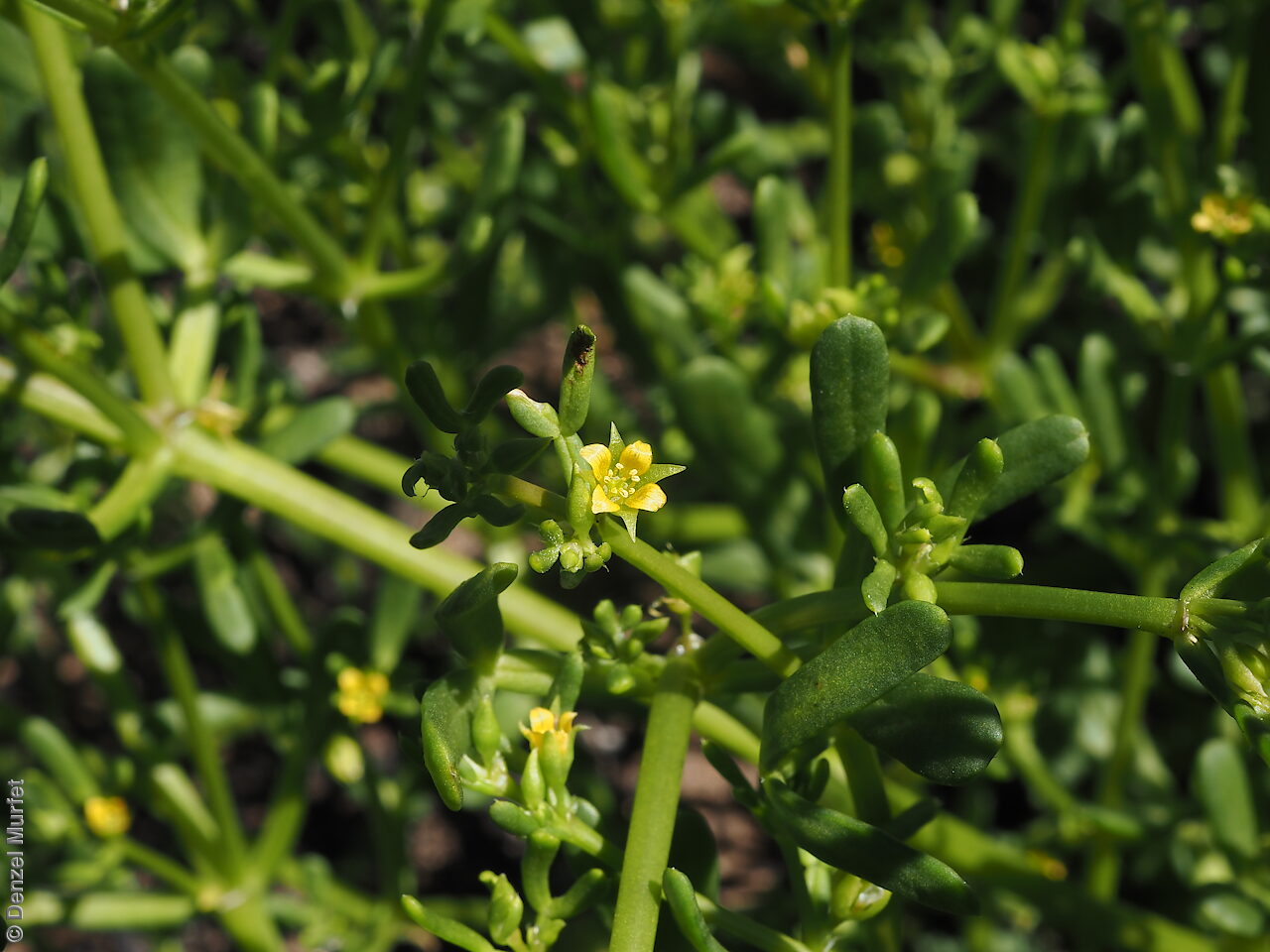
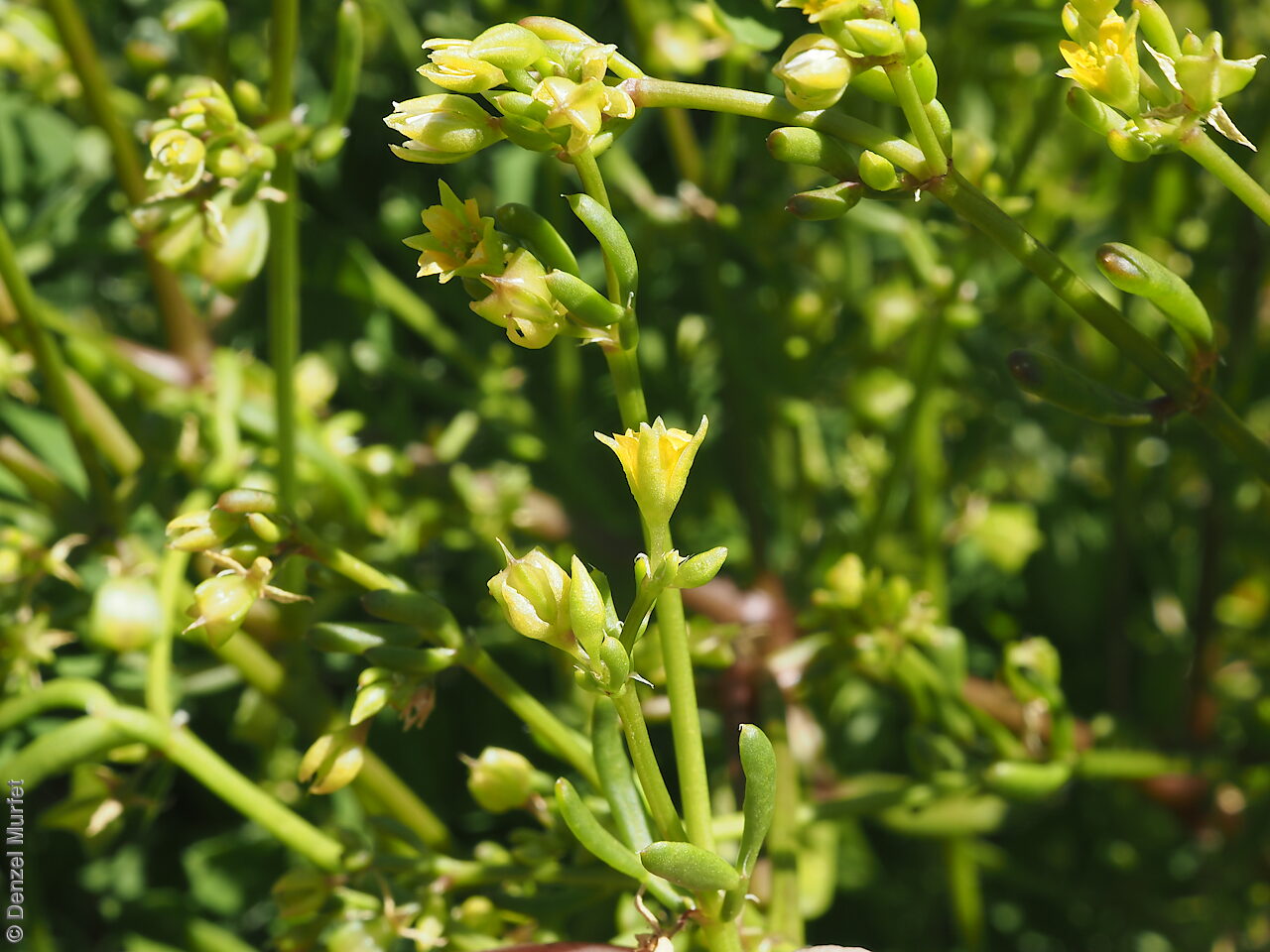
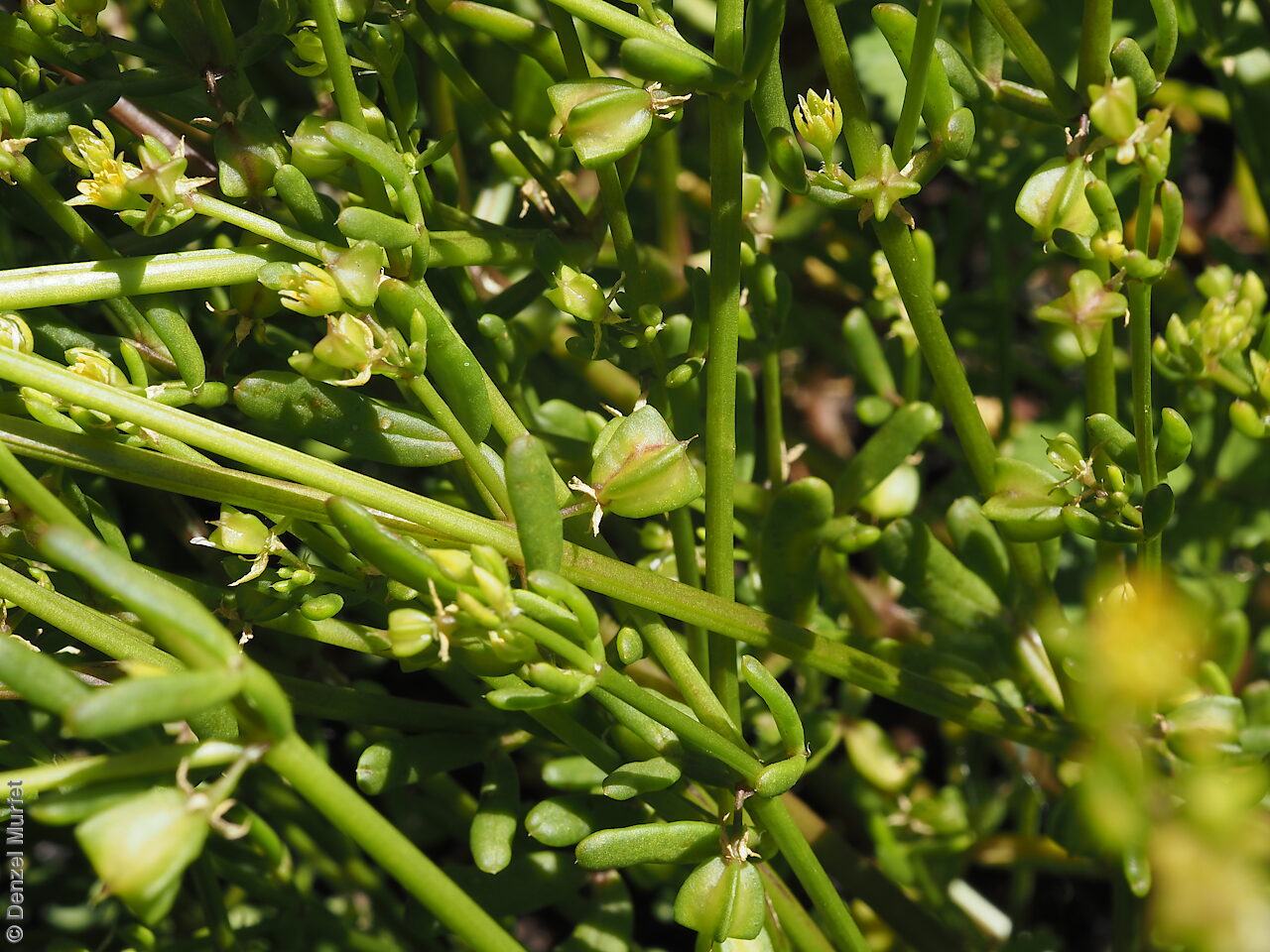
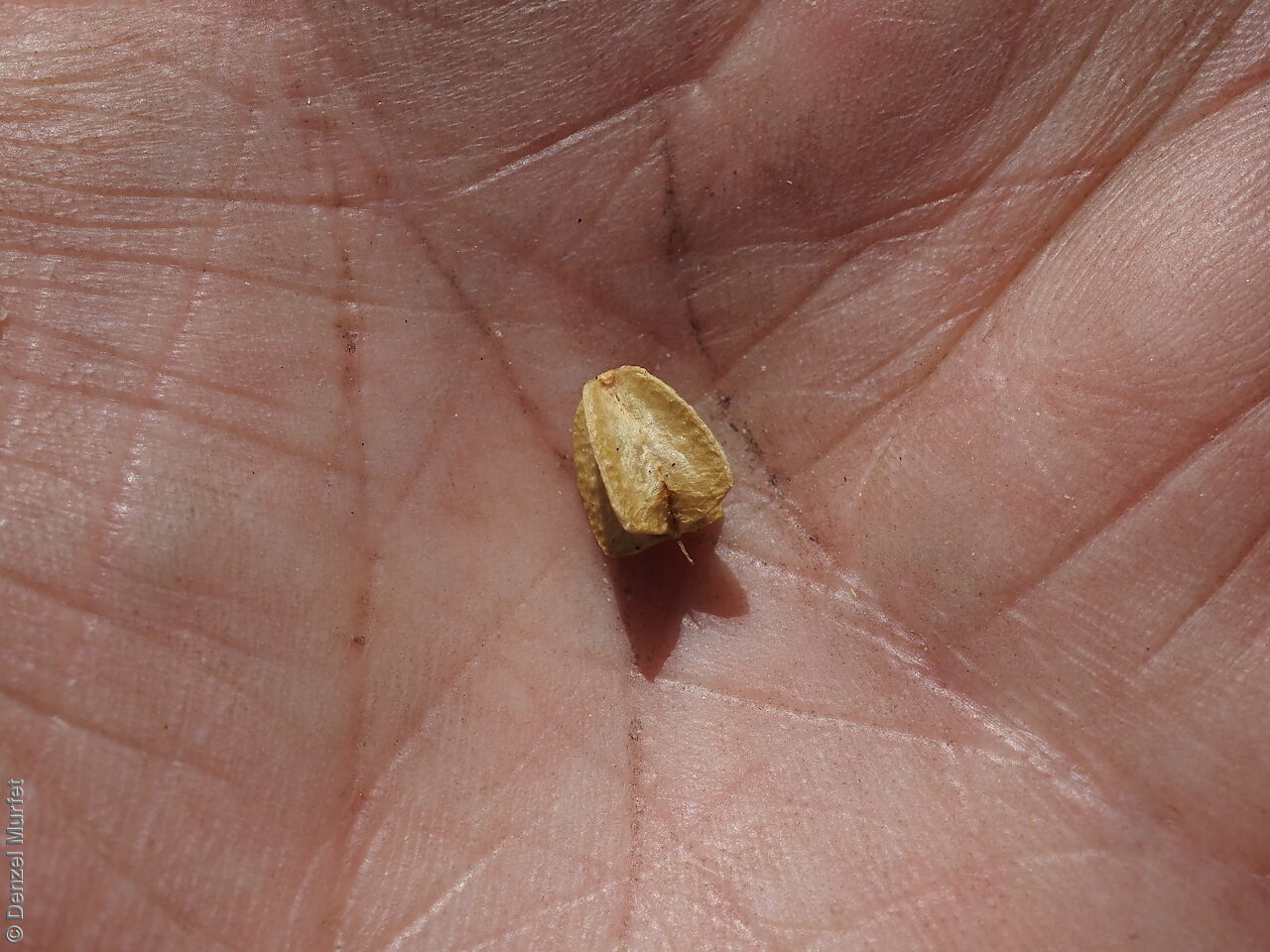
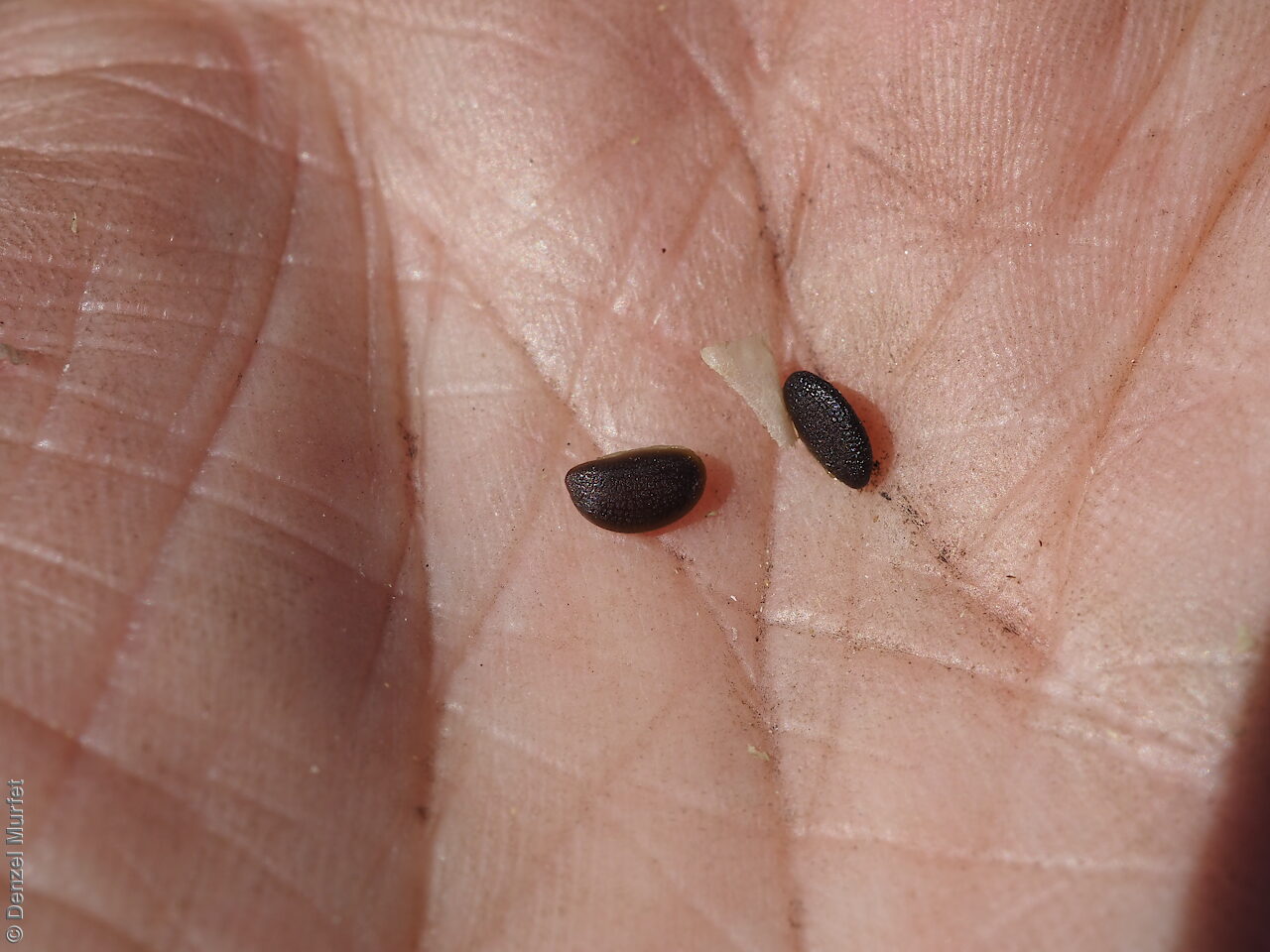
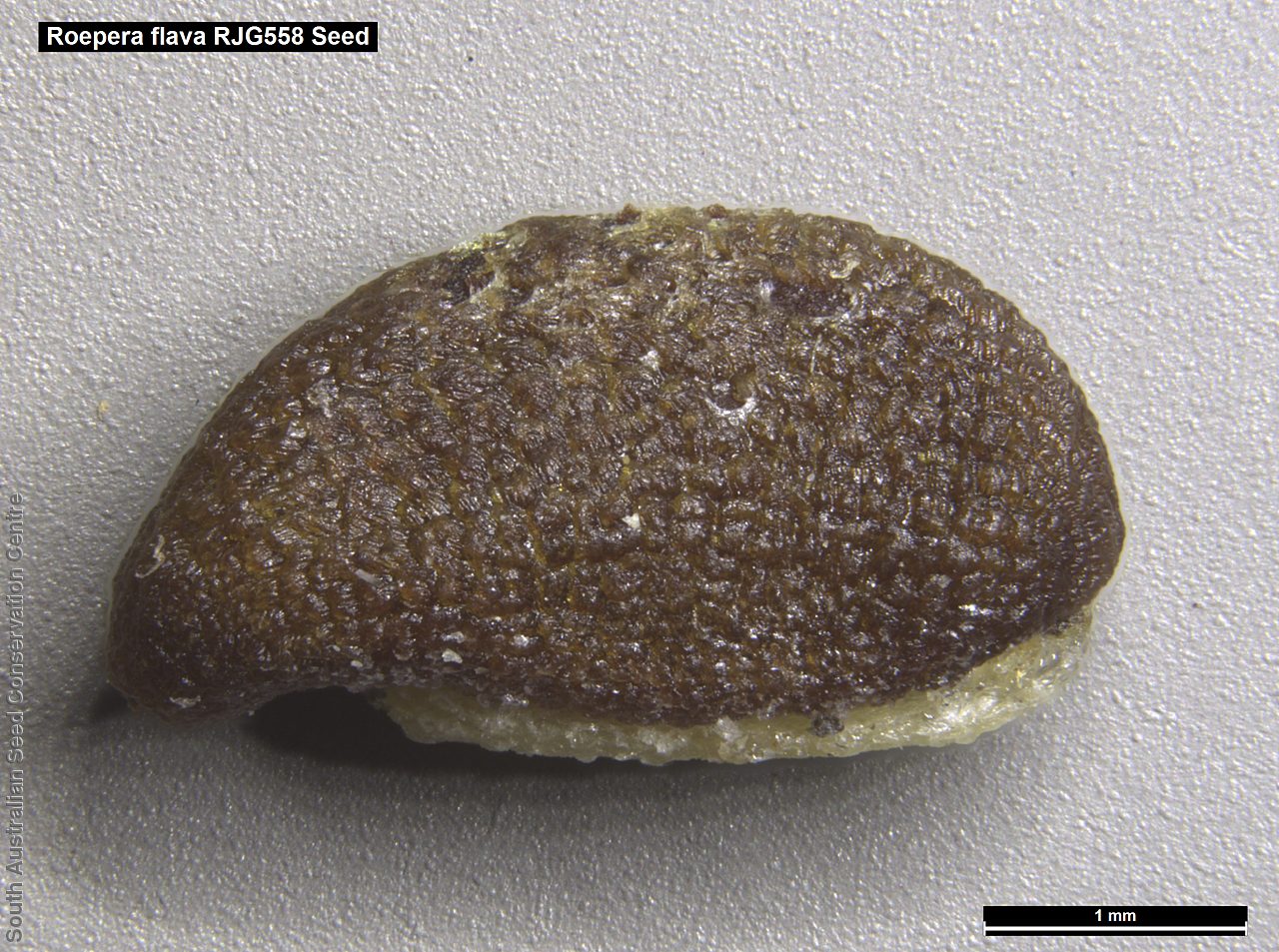
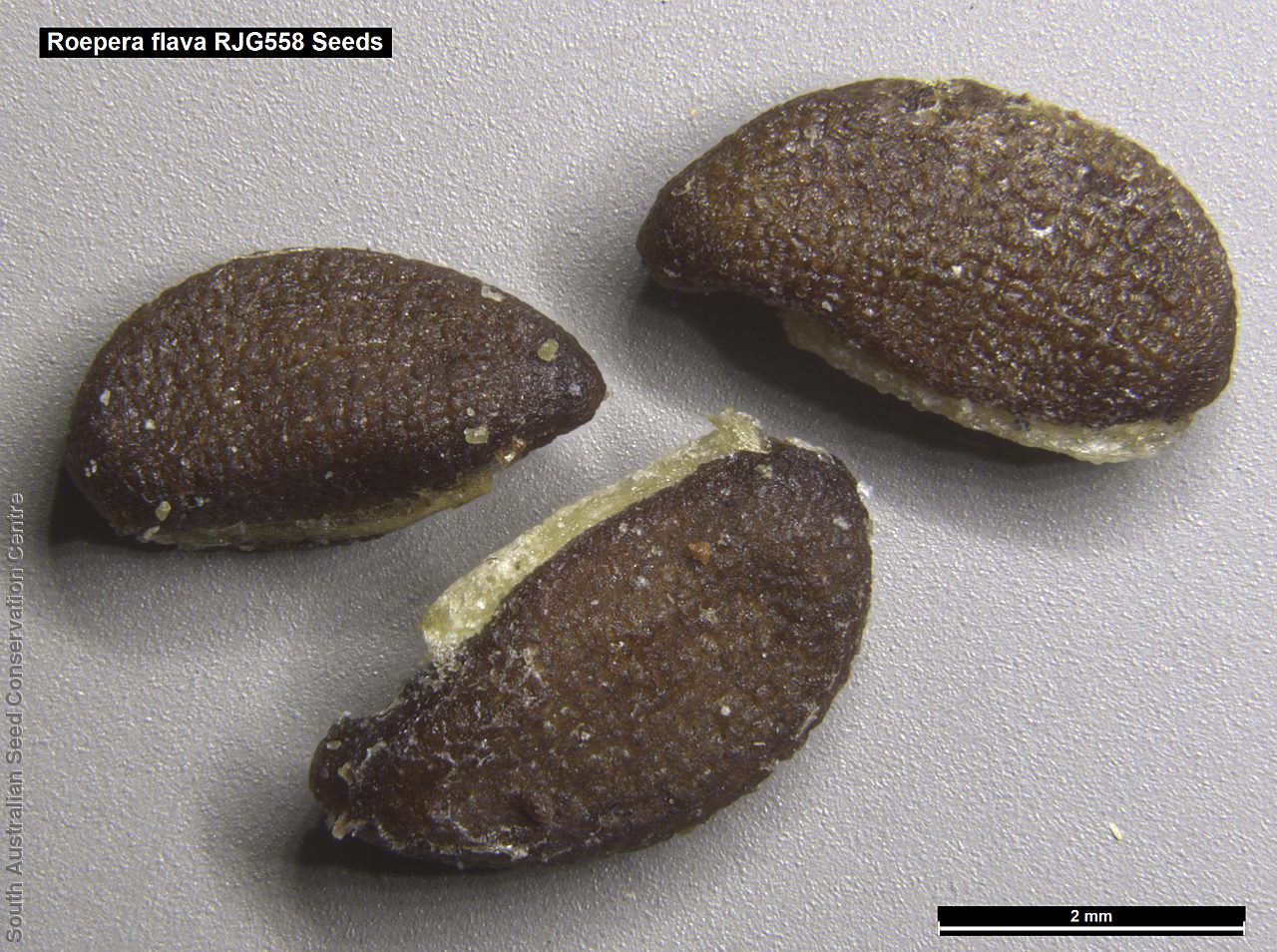

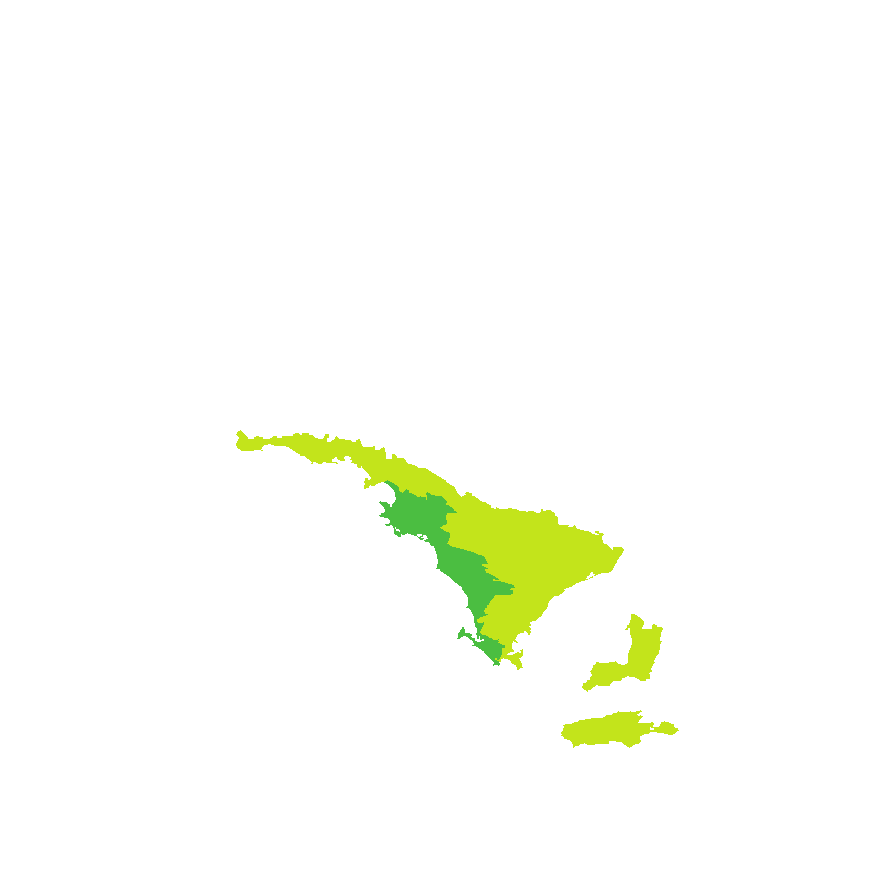
Prior names
Zygophyllum flavum
Zygophyllum billardierei
Zygophyllum ammophilum
Common names
Yellow Coast Twinleaf
Coast Twinleaf
Etymology
Roepera (formally Zygophyllum which is from the Greek 'zygon' meaning pair and 'phyllon' meaning leaf; referring to the pair of leaflets making up each leaf) is named after Johannes August Christian Roeper (1801 -1885), a German botanist and physician. Flava from the Latin 'flavus' meaning yellow; possibly referring to its light yellow flowers or stems.
Distribution and status
Endemic to South Australia and found on the Eyre Peninsula and Kangaroo Island, growing on sandy loam. Native. Uncommon in South Australia. More common after fire or other disturbances.
Herbarium regions: Eyre Peninsula, Kangaroo Island
NRM regions: Eyre Peninsula, Kangaroo Island
AVH map: SA distribution map (external link)
Plant description
Decumbent or straggly annual shrub to 40 cm high. Leaves petiolate, leaflets longer and broader than flattened petiole, succulent, narrowly elliptic or narrowly obovate, often in unequal pairs, to 20 mm long and 4 mm wide, constricted slightly at junction with petiole but not articulated, obtuse at the apex. Inflorescence solitary at each node with light yellow flowers. Flowering between August and January. Fruits are pale brown broadly obtriangular capsule to 7 mm long and 7 mm wide, 4-angled, 4-celled, truncate at base. Seeds are dark brown to black, ovoid to 2 mm long and 1 mm wide, with slightly wrinkled surface. Seed embryo type is spatulate fully developed.
Seed collection and propagation
Collect seeds between October and March. Collect semi-dried and dried capsules by running your hands through the stems of the plant. Mature fruits will come off easily and will have a hard and dark seed inside each segment. Place the capsules in a tray and leave to dry for 1 to 2 weeks, depending on how green the fruit is. Then rub the dried capsules to dislodge the seeds. Use a sieve to remove the unwanted material. Store the seeds with a desiccant such as dried silica beads or dry rice, in an air tight container in a cool and dry place. Seed viability is usually high.
| Location | No. of seeds (weight grams) | Number of plants | Date collected | Collection number Collection location | Date stored | % Viability | Storage temperature |
|---|---|---|---|---|---|---|---|
| BGA MSB | 1,450 (7.4 g) 1,450 (7.4 g) | 50+ | 18-Jan-2017 | JRG558 Kangaroo Island | 1-Nov-2017 | 100% | -18°C |
| BGA | 6,900 (29.970 g) | 50+ | 11-Jan-2021 | JRG788 Kangaroo Island | 28-Jun-2021 | 100% | -18°C, -80°C |
Number of plants: This is the number of plants from which the seeds were collected.
Collection location: The Herbarium of South Australia's region name.
% Viability: Percentage of filled healthy seeds determined by a cut test or x-ray.